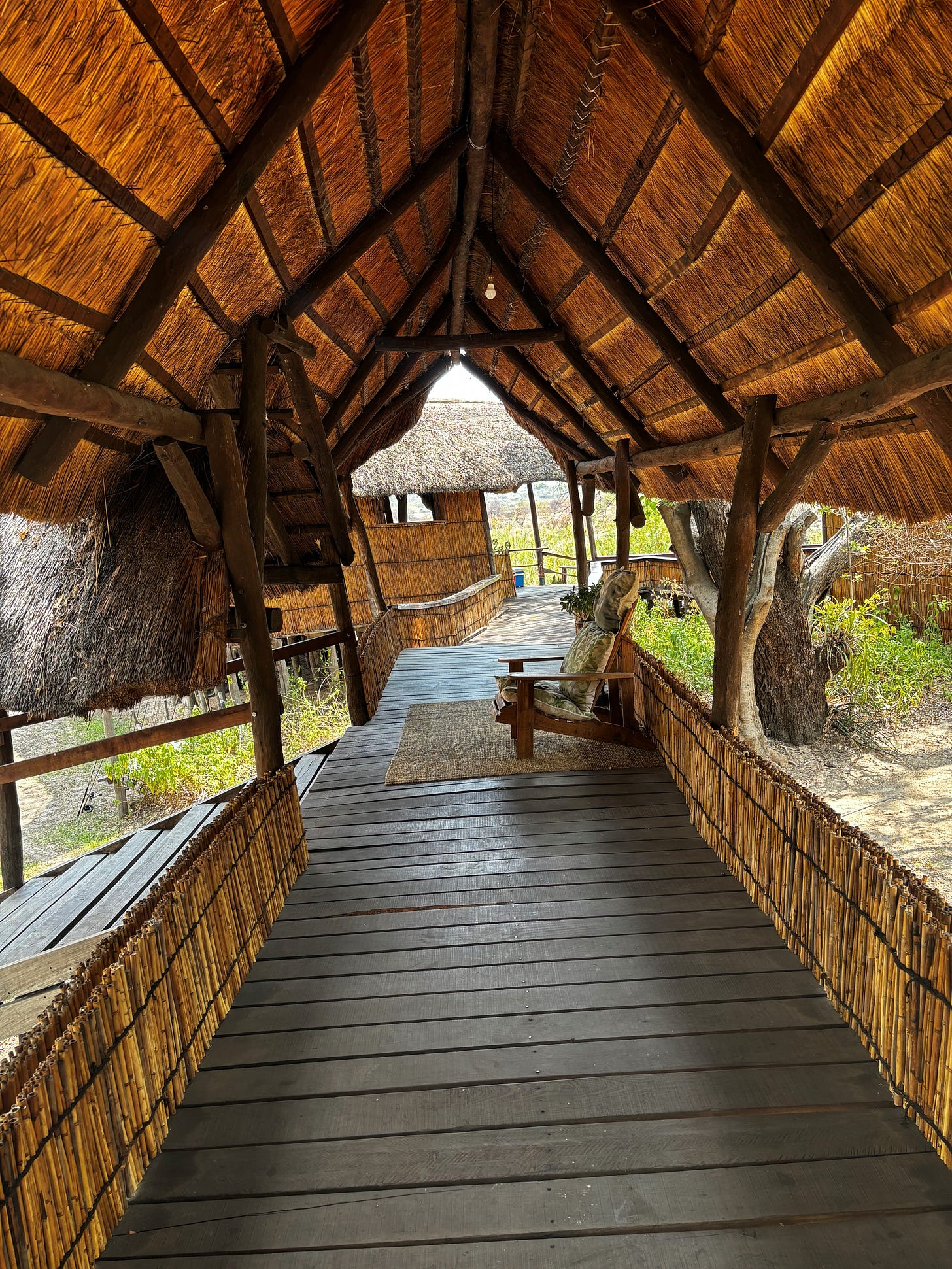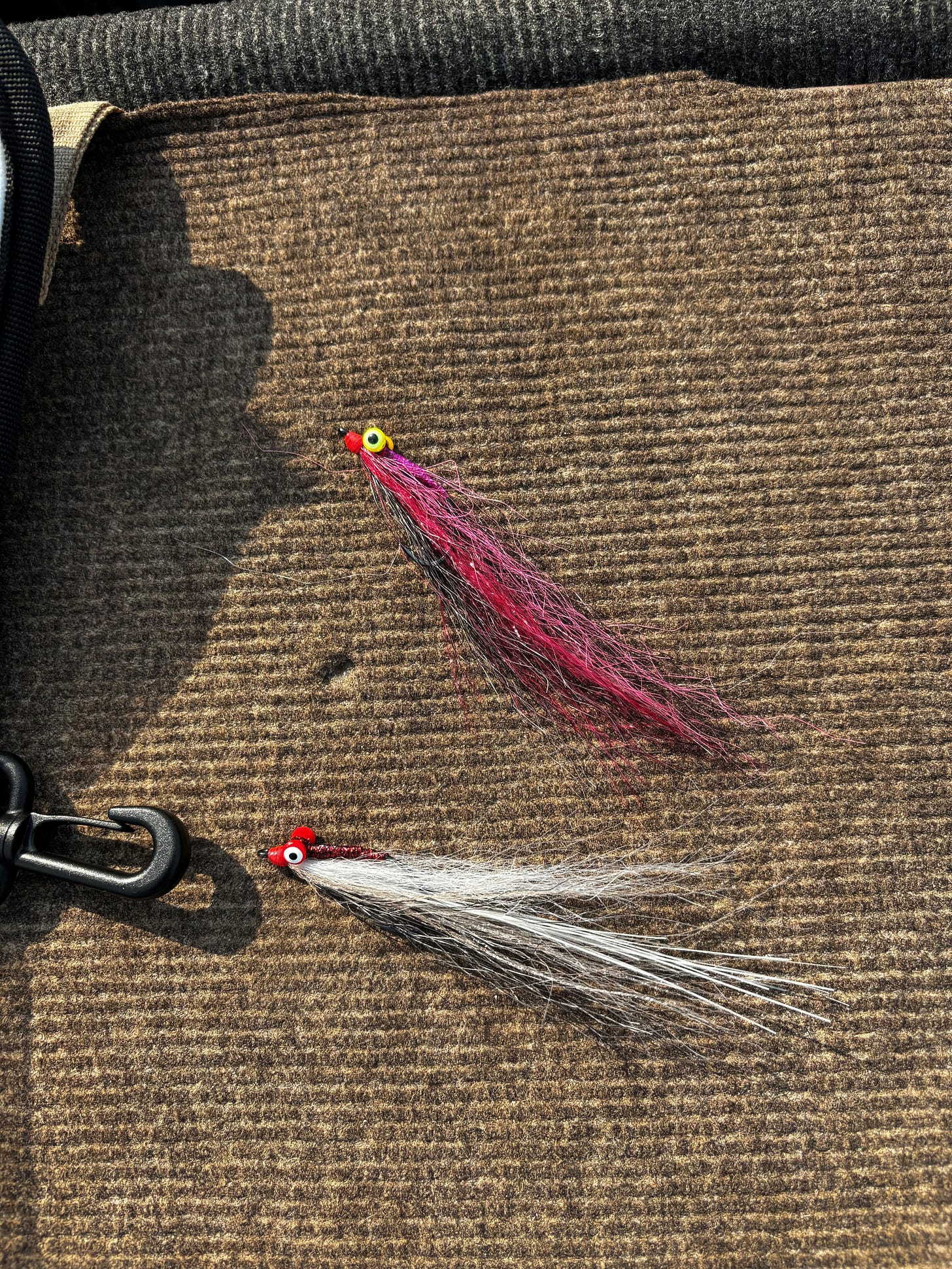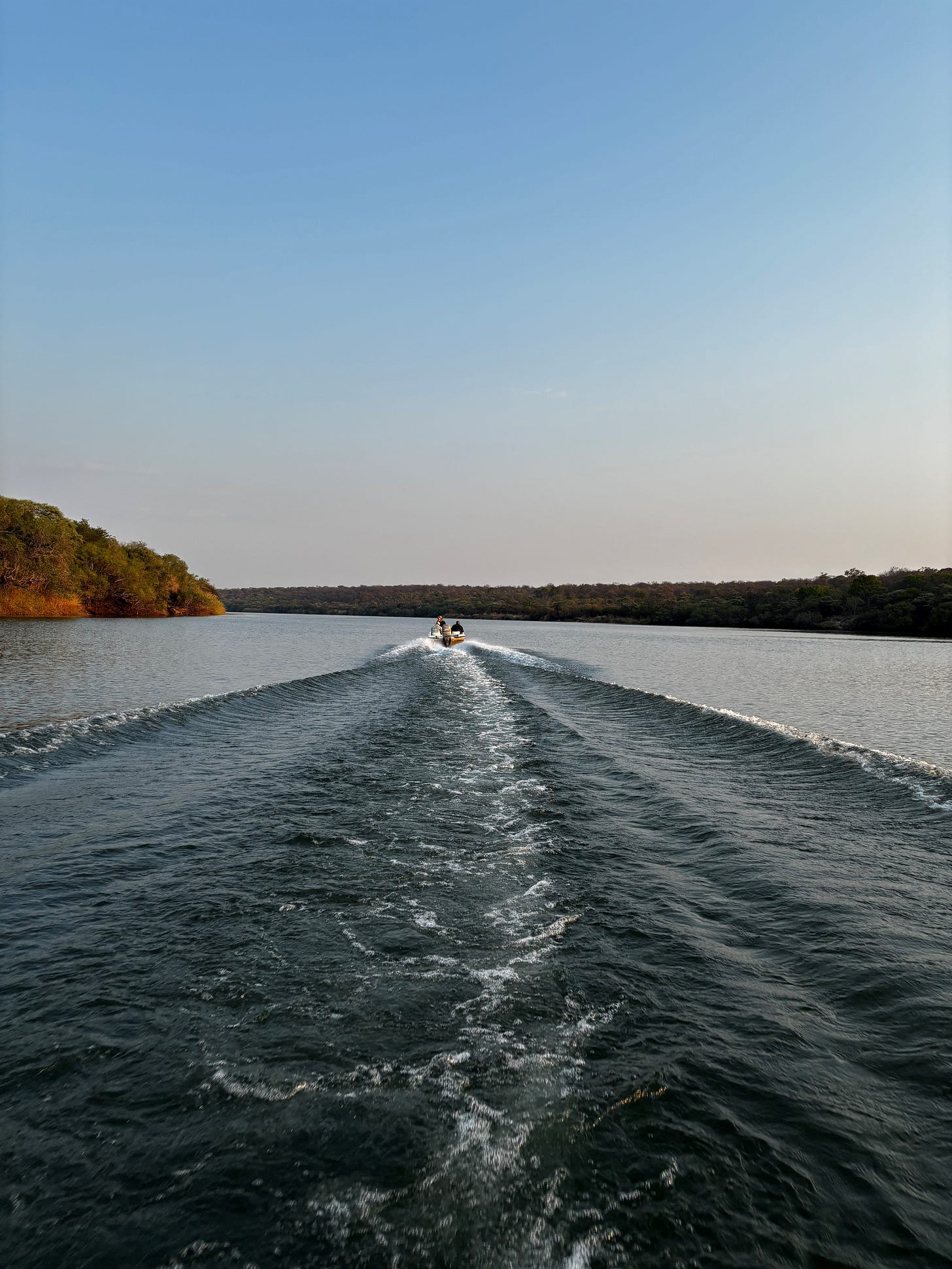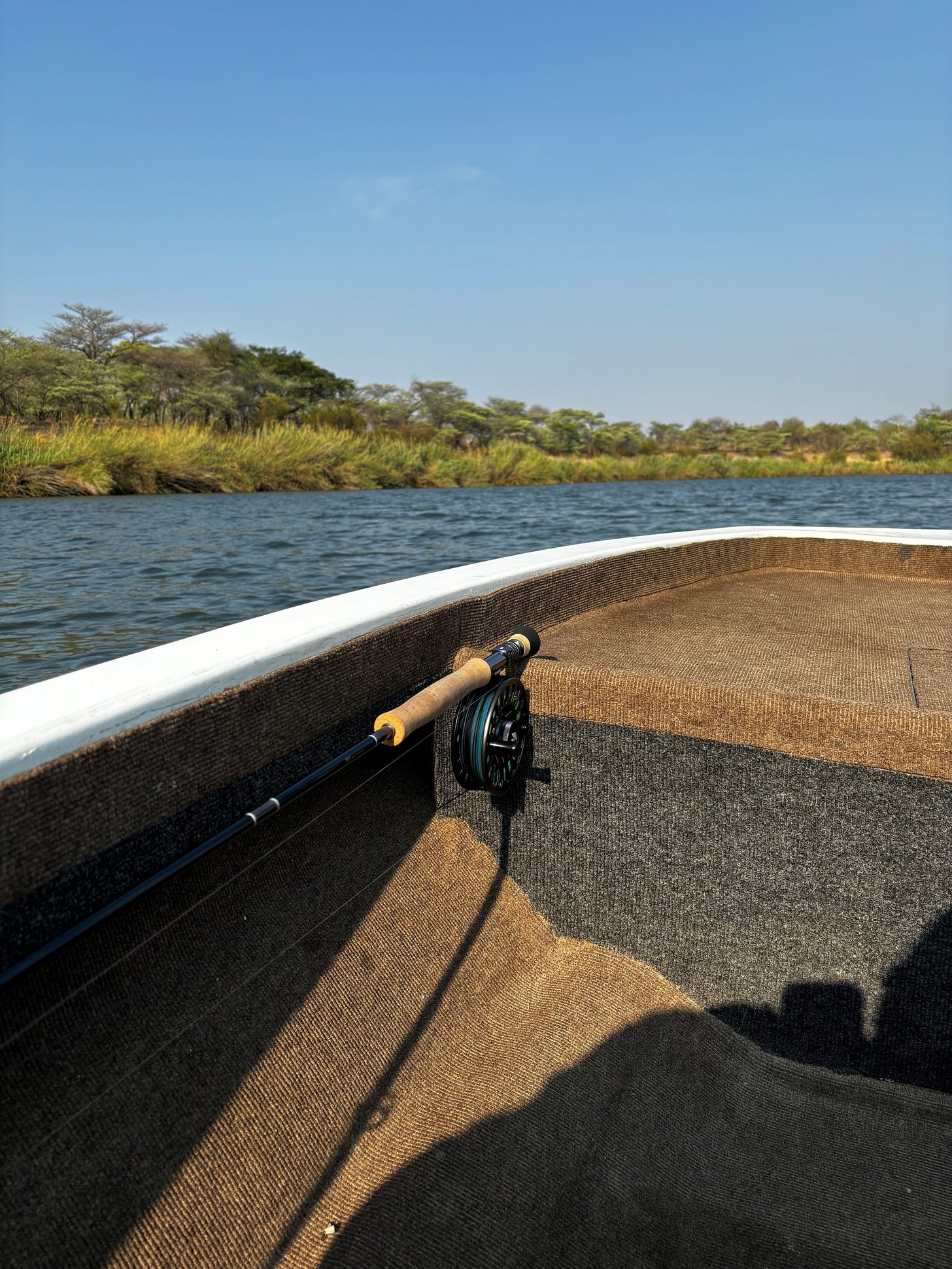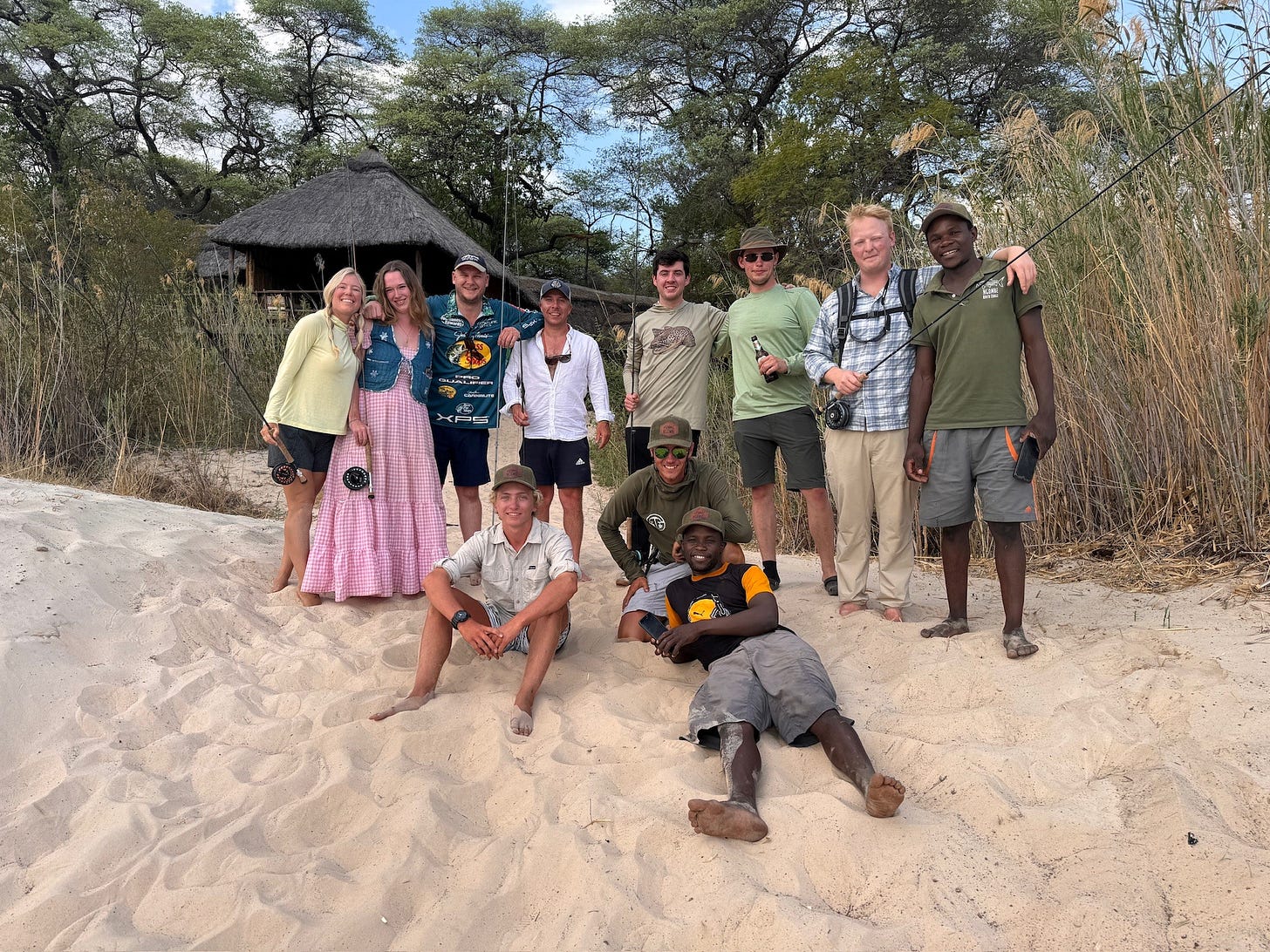Trip Report: Ngombe, Zambezi River Lodge
Aged twelve, I received an unusual gift—a mummified tigerfish head, a relic from Africa passed down by a family friend’s widow. To many, this might seem odd, but to a boy captivated by rivers and fish, it was mesmerizing. Its razor-sharp teeth captured my imagination, conjuring worlds far beyond the tranquil rivers of East Anglia.
Fast forward fifteen years, and I’ve recently returned from an unforgettable trip, fishing for this same voracious African species. Fly fishing offers the perfect excuse to explore remote corners of the world, and last week’s journey to the upper Zambezi was no exception. Organized by 'City Flickers,' a London-based fly-fishing club encouraging young people into the sport, the trip was a bargain: £1,400 for return transfers from Kasane, seven nights full-board accommodation, and six days guided tigerfishing. When I saw the offer a year ago, I signed up immediately—and managed to convince a good Icelandic friend, Hilmir Aevarsson, to do so also.
After some 24 hours of travel, the autumnal streets of London were swapped for the wilds of Barotseland and the mighty Zambezi River, some 250km upstream from the Victoria Falls. The river’s vast, glittering surface shimmered beneath the African sun as we were dropped at the rustic Ngombe Lodge, which would serve as our base for the week.
The first fishing session came around quickly, and as the boats loaded up there was a palpable sense of anticipation in the air. A cormorant on a rock eyed us curiously as we pulled away, the red sun peeking over the horizon. We began to fish, and as we drifted down a local man bathed quietly in the river. He waved, and we waved back—it felt as though we had crossed into another world.
Hooking a tigerfish on fly is an adrenaline rush like nothing I’ve experienced before. They attack with such ferocity that you feel it through your whole being. I learned this the hard way that first morning when my 25.5lb fluorocarbon leader snapped under the immense, sudden pressure of a violent take. Back at the lodge for lunch, we discovered one of the party, Christin Kruger, had landed a near double-figure tiger. It was clear there were some big fish around.
Despite this, the fishing wasn’t easy. Christin had also fished the previous week, during which the group of five anglers had landed just five tigerfish between them. Her success was well-deserved, and it buoyed the group’s spirits that fish of this calibre were in the vicinity.
The poor returns from the week before were largely blamed on challenging conditions: cold weather and strong winds, which tend to push tigerfish into deeper water. Adding to the difficulty was ongoing netting by the local Lozi community, which further impacted returns.
Despite the netting, the Zambezi is vast, and enough tigerfish evade capture to keep the fishing exciting. The hum of wildlife and distant roar of the rapids provided a visceral backdrop to each cast. Most sessions produced hits, but turning those into landed fish was another thing altogether. Seasoned tigerfish anglers estimate that for every three or four fish hooked, you might land one. This is largely due to their incredibly hard and bony mouths, which prove difficult for hooks to penetrate.
The difficulty only added to the appeal. By the third day, our boat had landed one tigerfish, a small but welcome fish of around four pounds. That morning, our skilled local boatman, Muvita, drove us to the Kaale Rapids, a wild, turbulent stretch of water. As he anchored the boat, the rhythmic thud of the motor gave way to the chaotic roar of the rapids. I began peeling line off the reel, and just two casts in, the fly was hit hard, sending a jolt of energy up the line.
This coursed through my body as the rod buckled under the impact, and I pulled hard to set the hook, feeling the dry line burn as it pulled through my fingers shortly afterwards. The fish had serious power, and as it surged, Muvita shouted at me to keep the rod low. I was too slow. The tigerfish erupted on the surface, shaking the hook free. “Four kilograms!” Muvita exclaimed. Shaking, I began to fully understand the adrenaline fuelled appeal of targeting these fish on fly.
The local guides found it amusing that we insisted on fly fishing, given how much more effective trolling could be. Still, they noted that the stealthier approach sometimes resulted in larger fish being caught. The lodge’s record on fly is a whopping 23lbs, landed by Vian Ferreira in 2022.
Each session ended with a hearty meal from the lodge’s resident chef and cold Mosi beers. These claimed to be 4.5%, but the locals suggested the ABV tended to vary somewhat. Operating a fishing lodge in such a remote and rugged environment is no easy task. The team at Ngombe did a fantastic job of keeping us well-fed, watered, and entertained throughout the week.
Evenings were spent around the bar or campfire, sharing stories of the day’s fishing. Conditions had improved compared to the previous week, with warmer weather and lighter winds. We fished two sessions a day: morning from 6am to 11am, and afternoons from 3pm to 7pm. Casting large, weighted flies on fast-sinking lines for nine hours each day was taxing, but the potential rewards on offer kept us fishing with energy and focus.
Over the course of the week, we had to work hard for every take. Most sessions, it seemed at least one of the four boats returned with stories of good fish either landed or lost. It was a visceral environment to cast a line in; of particular note were the hippos and crocs. One bull hippo was singled out by the guides as displaying territorial behaviour during the week. Hilmir and I were somewhat shaken when, one afternoon, this same hippo popped up directly in the path of the boat as we sped along at full speed. Thanks to the quick reflexes of Muvita, we swerved and missed the animal by no more than a meter or two. The incident was a stark reminder that we were not necessarily at the top of the food chain here. It gave the fishing an exciting edge.
As the week progressed, we learnt the importance of getting the correct retrieves. Lucy Mantle, the City Flickers founder, was doing well with four fish landed. Getting the fly down deep and mimicking the movements of local baitfish was often key. A count of ten, fifteen or even twenty seconds was needed for the fast-sinking Leviathan line to reach the right depth, whilst staying in touch with the fly in case of fish hitting ‘on the drop’. Once at the desired depth, a rhythm of two aggressive strips followed by a long pause seemed to trigger strikes.
Lucy’s passion for introducing people to fishing is commendable. City Flickers provides a fantastic network for young anglers to experience trips like this, and it was great to spend a week with a diverse group of characters, with everyone bought together by a common passion for fly fishing and the promise of an adventure.
Piscatorial success over the week largely depended on being in the right place at the right time. After losing two good fish, I was determined to make it count should I encounter another. That opportunity came on the final fishing morning when we headed to a known tigerfish haunt called Kapunde’s village.
The area had produced fish throughout the week, and we began to fish with purpose. I was armed with a tantalizingly mobile purple and black deceiver, tied by Cuban fly-tying extraordinaire Hector Rodriguez, and had great faith its ability to fool a hungry tigerfish. After fifteen minutes, the hit came—savage and unmistakable – and the hook was set three times over to drive it home.
The fish dived deep, and I kept the nine-weight rod low. A frantic few minutes followed. At one point, as the tiger neared it surged underneath the boat and jumped on the far side of us. Thankfully, the hook held, and our guide Muvita did a sterling job getting it in the net at the first time of asking.
It was a stunning fish—silver flanks gleaming in the sun, ferocious teeth bared, and a vibrant red tail flashing as it twisted in the net. We quickly unhooked, weighed, photographed, and then released it, watching as it disappeared back into the depths of the Zambezi. Slightly in shock, I sat down and thought of that mummified tigerfish head that had sparked my curiosity all those years ago. The moment felt somewhat like the culmination of that distant fascination.
As the water calmed around us, the chaos of the fight fading into stillness, I lit a cigarette and reflected on how fly fishing connects you to the environment in ways few other pursuits can. Every cast pulls you deeper into the rhythms of the river, each strike a reminder of nature’s energy. It was the perfect end to an unforgettable week. I felt privileged to have caught a fish of such calibre, but even more so to have been part of this wild, untamed landscape, if only for a brief moment in time.
In total, we landed nineteen tigerfish between eight anglers, including two that pushed into double figures. The fishing had been exhilarating, but what stayed with me most was the experience of daily life in such a remote part of the world. Stepping away from WiFi, Amazon, and Deliveroo felt like trading the artificial for the authentic. Everything here was raw, unfiltered, and immediate—each cast, each take alive with possibility. It was blissful to leave modern conveniences behind and immerse ourselves in something more real, even if just for a few days.




